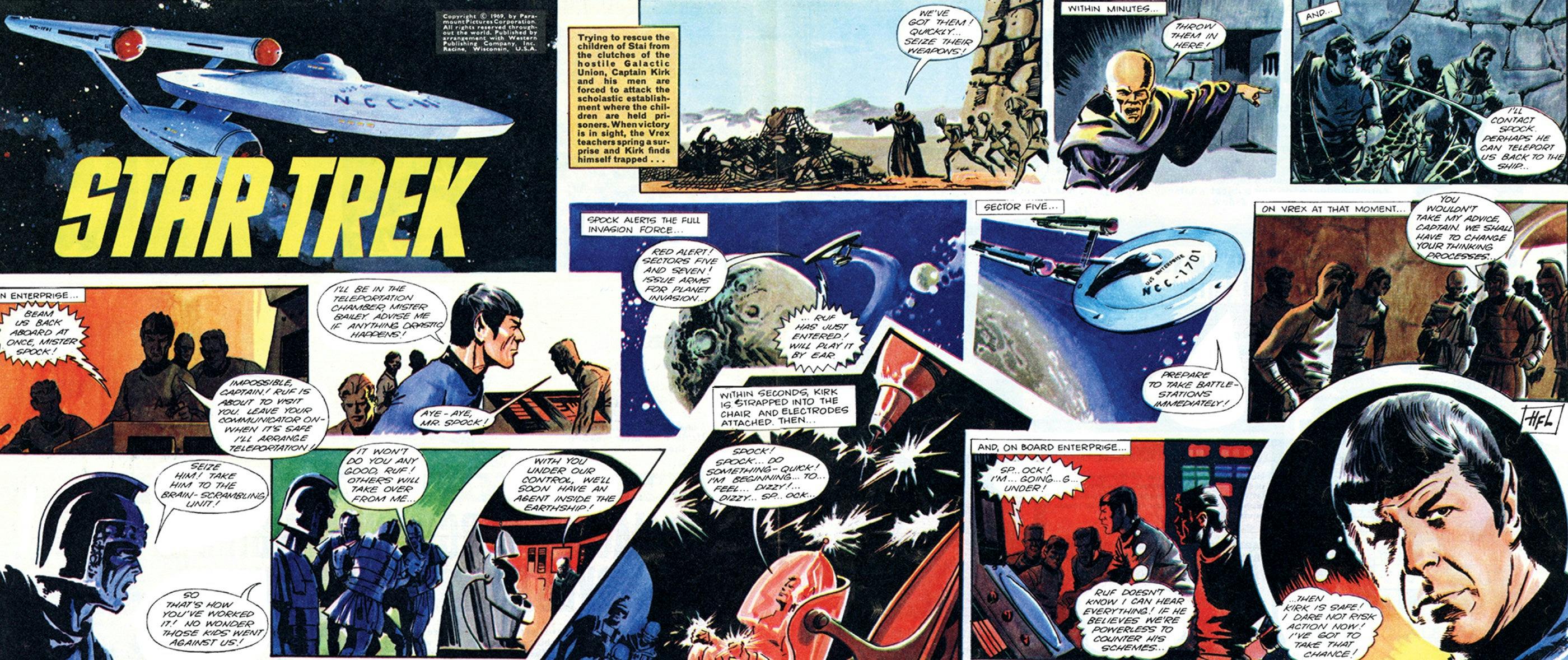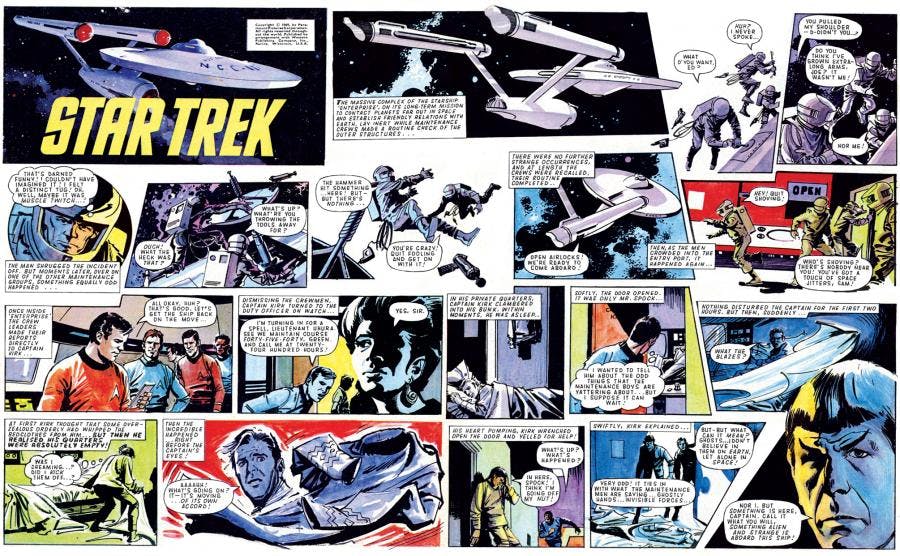Published Jan 5, 2016
GUEST BLOG: Classic British Trek Comic Strips Coming Soon
GUEST BLOG: Classic British Trek Comic Strips Coming Soon

Ask typical Star Trek fans which companies have produced Trek comics, and it's a good bet the first publishers mentioned will be Gold Key, Marvel, DC Comics, and the current license-holder, IDW. Savvy fans might recall the brief WildStorm run and Tokyopop's manga digests, while others, thanks to reprint books from IDW's Library of American Comics (LOAC), might bring up the L.A. Times newspaper strips or the McDonalds Happy Meals. But a lot of fans—particularly those outside the United Kingdom—will completely overlook a group of publishers that produced a sizable chunk of Trek lore way back when. Thankfully, LOAC has come through once again.


The stories are a bit loopy, but they're equally fun—and for more than 40 years, they've remained unavailable to the majority of collectors. Since the strips were published only in the United Kingdom and have never been reprinted other than a few days' worth appearing in vintage fanzines like Trek, T-Negative, The Monster Times and the Star Trek Souvenir Book, they've been the Holy Grail of Trek comics, available only as low-resolution scans shared online among fans.


